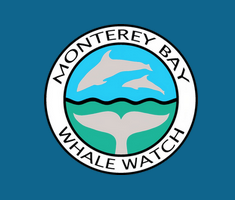
Monterey Bay Whale Watch, Fisherman’s Wharf, Monterey, CA
Boat: the Blackfin with Captain John
Sightings: 5 Fin whales, 45 Humpback whales, 12 Risso’s dolphins, some Velella velellas
Monterey Bay Whale Watch website
MBWW has three vessels ranging in size from 55 to 70 ft. Their main boat the Blackfin is a 65′ Catamaran with two decks and a total capacity of 117 passengers. The upper deck has outdoor seating and is by reservation only for a higher priced ticket. The main deck has indoor and outdoor seating and lots of room around all around the boat to see the action.
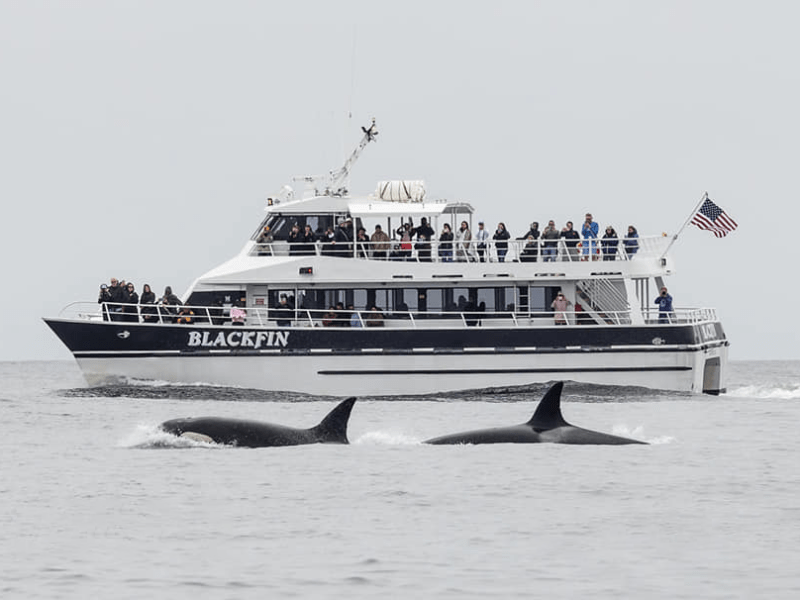
The Hubby and I have been out with MBWW many times and had fun every time, so we decided to end our week of adventures with them. We also had the pleasure of introducing a co-worker of his to the joys of whale watching in Monterey! It’s always fun to watch and share in another person having a great time seeing whales – kind of like double the fun 🙂
Humpback Whales
We started the morning with word of a very cool group of whales that the crew was hoping to show us. The captain made the decision to try and speed after before they left the area. It meant that while we were racing to our prize, we passed a whole lot of Humpbacks feeding in a wide area, most of them too far out of range to see much more than the blows as they came back to the surface. Scattered throughout were a number of breaching Humpbacks. The estimate given by the crew for number of Humpbacks in the area was 45! They were so spread out that is was a bit like a very wide shot from a documentary about Humpbacks. You got the scope of both the Bay and the sheer number of whales just in the area we were moving through. Very cool but hard to capture in a photo. Of course lots of folks were hoping the boat would stop to watch the breachers, but we kept going.
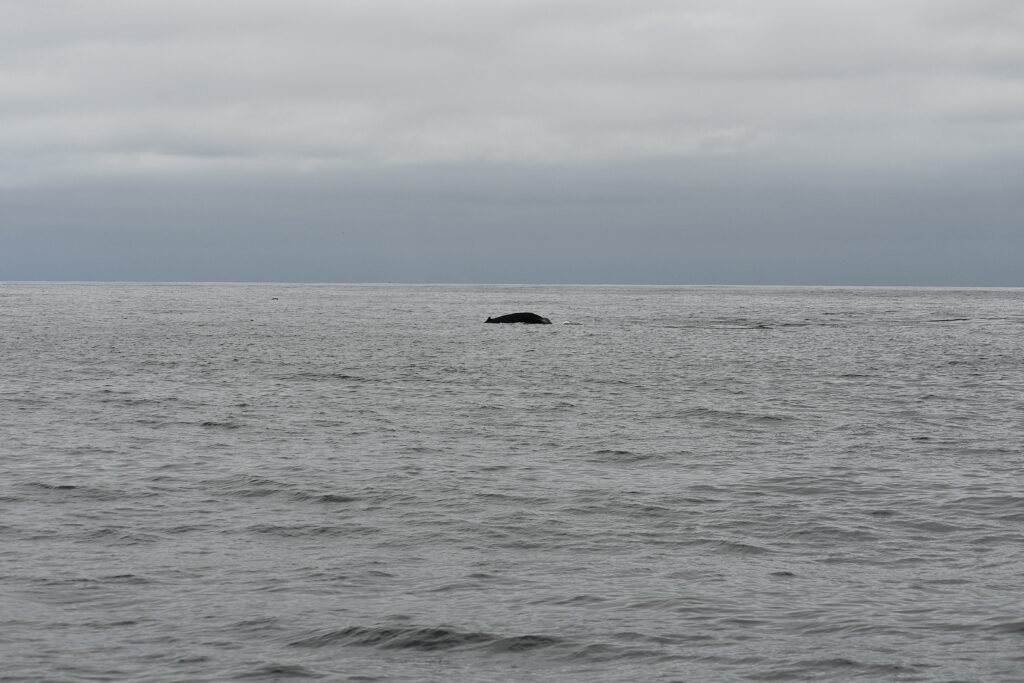
While the crew only told us that they had heard about “very cool whales”, presumably to keep us from getting our hopes up, Scott and I were pretty sure we were trying to catch a sighting of Orca aka Killer whales (and yes, both names are correct).
After an hour or so heading far out of the bay, past Pacific Grove and Caramel, it became clear that the Orca were traveling way to fast for us to catch up with them, and we turned back to toward the Bay.
Fin Whales
It turns out, sometimes chasing cool, but super fast whales, puts you in the right place to see a rare, for the area, whale. As we were working our way back up the coast and into the Bay, the Captain sighted Finn whales! The final count was five big, beautiful Fin whales! I had never seen a Fin whale in person, not a lot of people have, so this was a huge treat for all of us!

Hubby and I got curious about the location of the sighting and through photo location and time data were able to determine the where we most likely were: a the outer edge of the Bay north of Pacific Grove. The image below shows the coastline of Monterey and parts on either side. The dark blue is the Bay itself and the darker blue is the deep canyon which co-creates conditions for all the amazing life in the bay. The red place marker is an estimate of our location ten minutes after my last Fin whale photo.

Fin whales are the second largest whale on the planet averaging 80 feet in length (20 feet shorter than the average Blue whale). Fins are long, lean baleen whales averaging 80 feet. They are known for being fast swimmers and sometimes referred to as the grey hound of the sea.
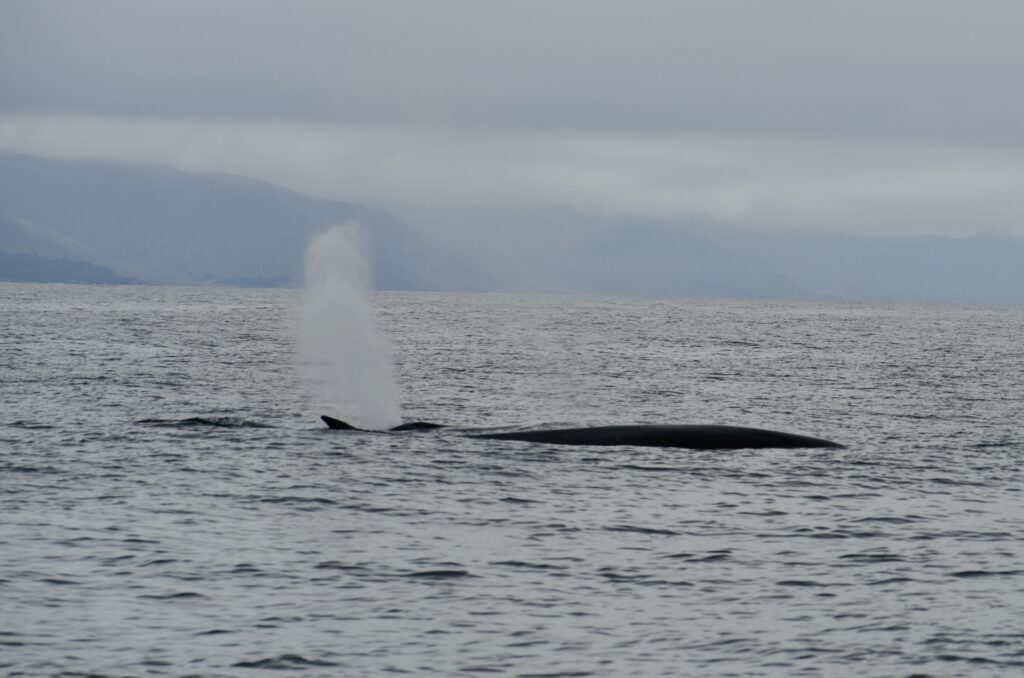




Fin whales are mostly gray on top with only their small, pointed dorsal fin, its easy for them to blend in with the water and sky. They can be hard to differentiate for the surface water and from the boat I found it hard to process just how large they were. If you’ve ever wondered why whales get hit by boats (aside from people not knowing and/or obeying the speed and distance rules), this is part of the issue. When a being who’s coloration closely resembles the water they live in, and the have a very low profile when at the surface, they can end up looking like logs, shadows, or even debris. They are be hard to see if you don’t know what to look for, and even sometimes when you do.
Since whales are mostly eating and hanging with friends or family in Monterey Bay, a lot of what we see from the boats are whales preparing to go down to where their food is and coming back up to breathe and rest. Having seen mostly Humpback whales on my trips, I’ve gotten familiar their version of that process. Finn whales are a little different.
At the start of a dive, a whale will dip their heads down, their back curves and the dorsal fin comes into view shortly thereafter. If they are planning to go fast or deep, the tail flukes will follow, which is when we can get photo IDs of Humpbacks. Its a pretty swift succession of head, shoulders, arch of the back, and dorsal fin when a Humpback does it. With the Fin whales the main difference was the seemingly never-ending flow of their broad backs as they slowly curve downward, then the “long” wait for the dorsal fin. The distance between the blowhole and the dorsal fin seems like forever when watching a Finn whale dive. The photos below were taken seconds apart over less than a minute but it felt incredibly long in the moment!
In the top photo the ridge of the blow hole is visible to the right of the screen. You can see the remains of the whale’s most recent blow in the air to the left of its back. The slowly dip their head until their their small dorsal fin peaks up out of the water. Then instead of arching sharply like I’m used to with Humpbacks, the Fin whale seemed to pause in the water, not curving any deeper, and then sort of sank, mostly, straight down. Most of their dives were like this, which makes me wonder how close to the surface the Krill that they love so much was.



Look though my photos I realize that part of the “how big are they” question is due to the lack of anything to compare them too. In this sighting, it was the Fin whales, us, and whatever was under the water that we couldn’t see. Looking through photos, the dorsal fin is not really that small.
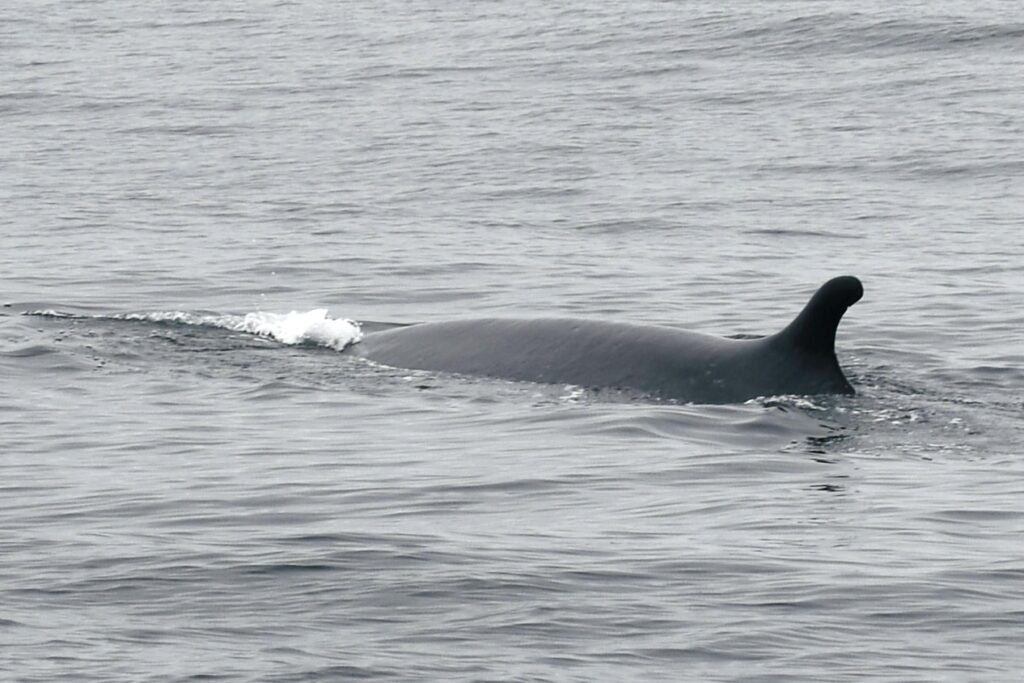
A fascinating thing about Fin whales is that they the left and right sides of their lower jaws are different colors. Their right side is light gray down to their pectoral fin and dark gray/black on their left side.

The illustration by Ida Eriksson is posted on their Redbubble page along with many more wonderful illustrations (I might have splurged on a bunch of stickers with their art).
A really great way to see Fin, and other, whales in more detail is with aerial drone cameras that can look down at the whales from high above. The folks at Discovery Whale Watch had seen several Finn whales the day before our trip with them and had a drone in the air, the footage of which included this beautiful image.

In July MBWW saw another group of Fin whales and posted this aerial footage on FaceBook
During our travels we also caught sight of a small group of Risso’s dolphins and a shark! I’ve never seen a shark in the wild before, so this was neat. Of course the beauty of seeing critters in aquariums is that we can see under the surface and in the wild, we’re looking down at the top of the water. Still I managed to get one, mostly clear photo of it’s dorsal fin! I want to say it was a Salmon shark, but there was a lot going on in that moment, and MBWW didn’t note it in their page.
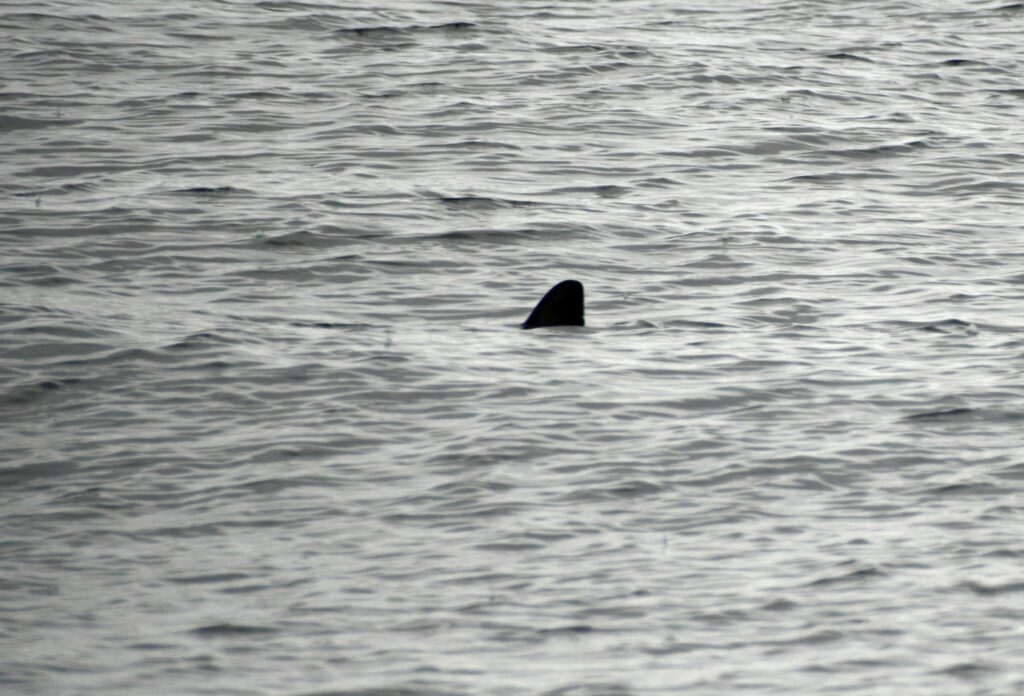
As we began the trip back to Fisherman’s Wharf we saw several clusters of Velella velellas floating on the water’s surface. These are the same fascinating little critters we’d seen on our first trip with Discovery Whale Watch. They are known as By the Wind Sailors, Velella vellas because who go where the wind takes them. Thankfully I was able to get much better pictures this time! I did a deeper dive into these critters that you can read here.



And then it was time to head home with a memory card packed with photos! Once off the boat, Scott, his co-worker, and I got lunch to refuel and talk about our morning. All in all it was a spectacular day on the water and a hell of an end to an amazing three days of whale watching.
Note: all photographs are (C) Catherine Pennington, 2025 unless otherwise noted.
